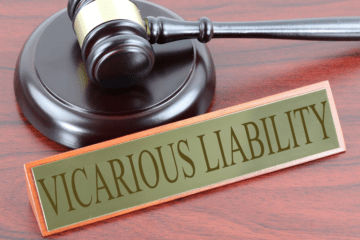
Introduction
Negligence as a tort is an actionable wrong that consists in the neglect of use of ordinary care or skill towards a person to whom the defendant owes the duty of observing ordinary care and skill and because of that neglect, the plaintiff has suffered injury to his person or property.
The word Negligence is derived from the Latin term “negligentia”, which means ‘failing to pick up’. In legal term negligence means failure to perform the basic of care which the performer as a reasonable man of ordinary prudence should have performed in all situations.
Definition
According to Austin, negligence as a state of mind gives rise to tortious acts which are penalized by award of damages. Salmond calls negligence as “culpable carelessness”. It can be defined as absence of proper care, caution, and diligence which a man of ordinary prudence would require to be exercised.
Winfield defines negligence as the breach of a legal duty to take care, which results in damage, undesired by the defendant to the plaintiff.
In Blyth vs Birmingham Waterworks[i], negligence is defined as an omission to do something which a reasonable man, under those circumstances, would do or not doing that which a prudent and reasonable man would not do.
For instance, not covering the trench on a road under repairs with red lights on either side of it is an act of negligence.
In the case of Donoghue vs Stevenson[ii], the House of Lords stated that negligence as a duty to take care is a specific tort in itself, and not simply an element in some more complex relationship or in some specialized breach of duty.
The SC has defined negligence in Prafulla Kumar Rout vs State of Orissa[iii], it was held that negligence is an omission to do something which a reasonable man guided upon these considerations which ordinarily regulates the conduct of human affairs would do or the doing of something which a prudent and manes would not do.
In Ramesh Kumar Nayak vs Union of India[iv], the court held that negligence means failure to exercise the required degree of care and caution expected of a prudent man.
Essentials of Tort of Negligence
In order to prove the tort of negligence and claim damages the plaintiff needs to prove:
- That the defendant owed a duty of care to the plaintiff
- That the defendant had breached that duty
- And because of that breach the plaintiff had suffered damages.
- Duty of Care to the Plaintiff
Duty toward the plaintiff is one of the essential ingredients of tort of negligence. A person can only be held liable for tort if he owed a legal duty of care towards the plaintiff.
In Donoghue vs Stevenson[v], the plaintiff purchased a bottle of ginger beer from a retailer, she consumed the same but later discovered that a decomposed snail was floating in the beer. Due to the consumption of the contaminated beer she had to suffer gastro-intestitis. The plaintiff sued the defendant and the defendant pleaded that he did not owe any duty towards the plaintiff as there was no privity of contract between the two. The House of Lords held that the manufacturer owed a duty to plaintiff and since he failed to take reasonable care, he is liable to pay damages to the plaintiff.
In the case of Ramesh Kumar Nayak vs UOI[vi], a wall of General Post Office, Cuttuck was collapsed due to which the plaintiff got some serious injuries and he filed a suit. It was found that the wall collapses due to the negligence of its proper maintenance by the Post Office authorities. Therefore, the court held the General Post Office of Cuttuck liable to pay compensation to the plaintiff.
In Rayn vs Young[vii], the driver of lorry who was otherwise healthy suddenly died due to heart attack while driving the vehicle and because of which it went off the road and dashed against a tree and some passengers got serious injuries. The court held that the owner of lorry is not liable because this was a case of inevitable accident which could not be averted despite all care and precautions.
Thus, the defendant will not be held liable for tort of negligence if the damage is not proximate and foreseeable.
Grant vs Australian Knitting Mills Ltd.[viii], the plaintiff purchased some clothes from a retailer and contact a skin disease by wearing that. It was found that there was excess of sulphates which the manufacturers negligently failed to remove while washing them. Thus, the court held the manufacturer liable as he failed to perform their duty.
- Breach of Duty
In order to claim damage, the plaintiff need to prove that there is breach of duty on the part of the defendant. The defendant had not taken reasonable as a man or ordinary prudence would do in those circumstances.
In Phillip vs William Whiteley Ltd.[ix], it was held that a goldsmith piercing ears is not bound to take the same precaution as a surgeon would take, but he is certainly expected to take precautions as reasonably be expected of a goldsmith.
In Saraswati Parabhai vs Grid Corp. of Orissa[x], an electric pole with live wire got uprooted due to heavy rain and storm thereby causing death of the plaintiff’s husband due to electrocution. The court held that the defendant corporation liable for breach of duty to take care so that the safety of public is not endangered due to live wire lying on the road or public place.
In Bihar Co-operative, D & C. M. Ltd. vs Bank of Bihar[xi], the SC held that where the signatures of the customer on the cheque are not genuine, and the bank is negligent in detecting the same, it shall be held liable and it would be no valid defence for the bank to argue that it was negligence of the customer that left the cheque book carelessly so that third party could use it.
- Damages
The plaintiff is required to prove that he actually had suffered some damages due to the negligent act of the defendant. However, the quantum of damages depends upon the facts and circumstances of the case and the degree of negligence attributable to the defendant and it would be decided by the court.
In Kumari vs State of Tamil Nadu[xii], a six-year girl died by falling into an uncovered manhole. The state disowned the liability for this accident and the HC accepted the defence of the state but when appeal was filed to the SC, it was held that state is vicariously liable for the negligence of its sanitary staff and held liable to pay Rs. 50,000/- as compensation to the parents of the deceased.
In Zavier vs State of Tamil Nadu[xiii], plaintiff’s son was died by coming into the contact of a live electric wire which was negligently left naked on the road by the municipal corporation. The court ordered the plaintiff to pay compensation of Rs. 50,000/- to the plaintiff along with 12% of interest.
Forms of Negligence:
- Nonfeasance: – Nonfeasance refers to the act of failure to do something which a person should have done.
- Misfeasance: – It means the act of not doing an action properly when it should have been done.
- Malfeasance: – it means the act of doing something which should not have been done in the first place.
[i] (1856) 11 Ex 781 (784)
[ii] (1932) AC 562
[iii] 1995 Cri. LJ 1277
[iv] AIR 1994 Ori. 279
[v] Supra 2
[vi] Supra 4
[vii] (1938) 1 All ER 522
[viii] (1935) UKPC 2
[ix] (1938) 1 All ER 566
[x] AIR 2000 Orissa 13
[xi] AIR 1967 SC 389
[xii] AIR 1992 SC 2069
[xiii] AIR 1994 Mad 306
(XIV) Dr. N.V. Paranjape, Law of Torts (4th edition 2019)




0 Comments